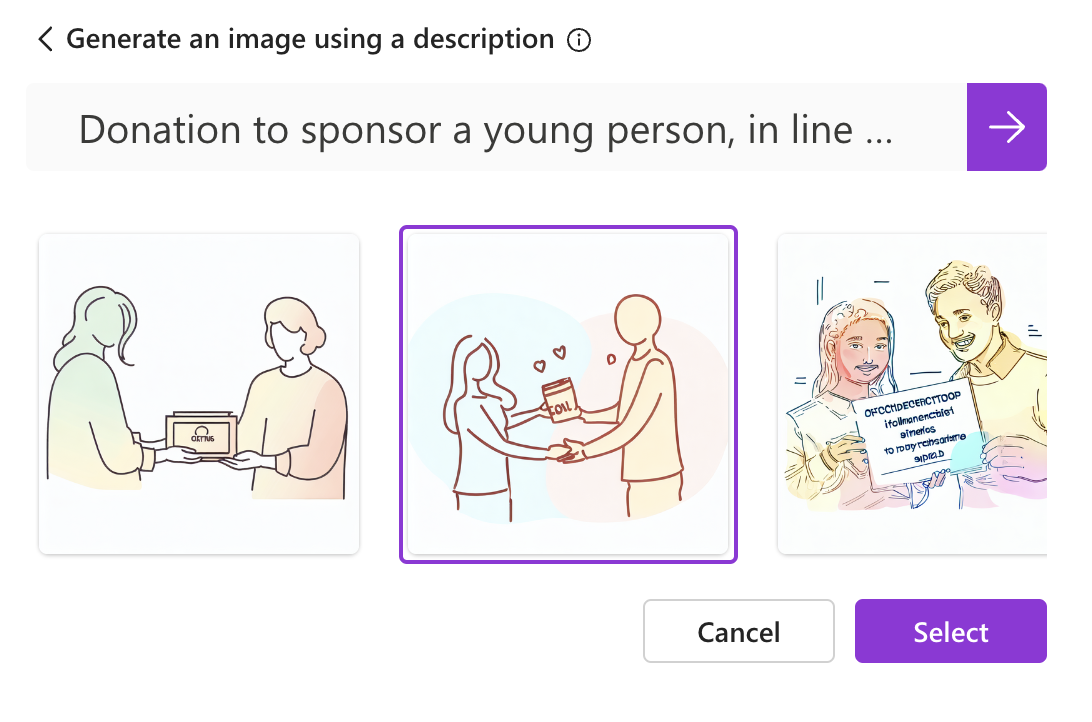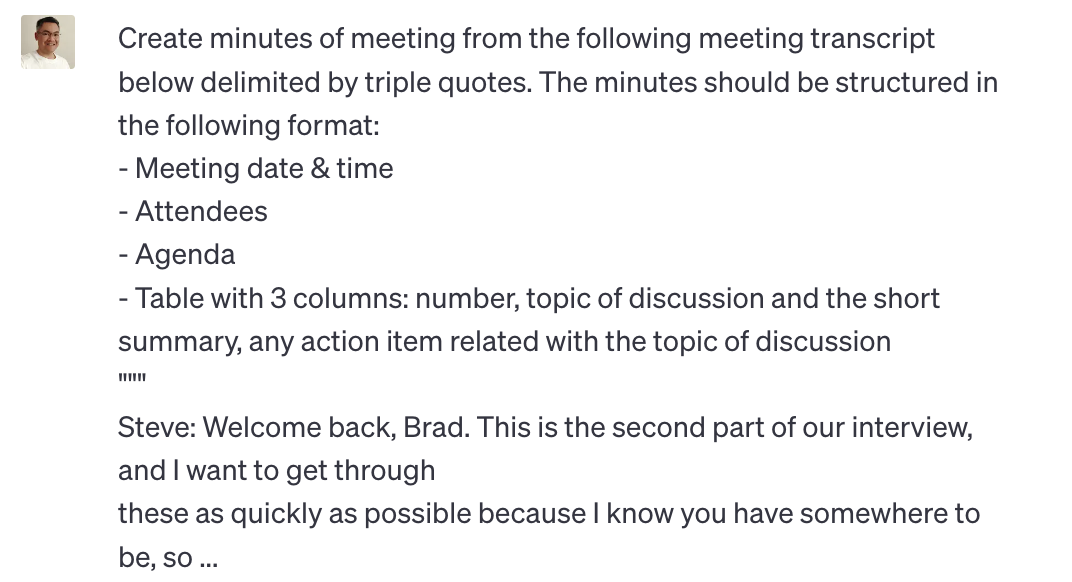Empowering Nonprofits with Generative AI
Introduction
Have you ever considered the possibilities of Artificial Intelligence, specifically the capacities of Generative AI? If your work revolves around the nonprofit sector, this question is more than just theoretical musing. It could guide you towards a tool that has the potential to boost your efficiency considerably.
So, what is Generative AI? It's a branch of machine learning where the algorithm, through training on the available data, learns to produce something entirely new. This is not simply a matter of repetition or duplication. The AI creates something unique, inspired by learned patterns, similar to a child creating unique drawings after observing some examples. In its own domain, Generative AI generates new outputs, such as text, images, or even music.
Generative AI isn't just a fleeting tech buzzword. It's here, and its capability to enhance productivity is not just a promise, but a reality that's being experienced today.
This technology holds immense potential, particularly for nonprofit organizations. They often face significant resource challenges. Most nonprofits embark on their mission with a human resource deficit. What if this deficit could be addressed with Generative AI? What if Generative AI could help with routine tasks, enabling your team to dedicate more time to mission-critical responsibilities? Imagine serving your community more effectively, generating insightful reports, or executing impactful campaigns, all while your team spends less time on mundane tasks and without any job displacement.
This illustrates the transformative potential of Generative AI for the nonprofit sector. The goal isn't about replacing humans, but assisting them, enhancing their potential. It's about empowering your team, improving efficiency, and optimally utilizing resources without threatening jobs. So, let's delve into the possibilities together.
8 Practical Ways Generative AI Can Boost Your Nonprofit's Output
Generative AI is a potent tool that can supercharge a nonprofit's output, streamlining operations and speed up task completions. It's worth noting that as of June 2023, these steps involve patching multiple solutions together. But soon, more seamless solutions will be available (see Microsoft 365 Copilot and AI-powered Google Workspace).
Let's walk through eight example uses of generative AI. Keep in mind that each step requires a conversation with your generative AI and iterative improvements to get the best results.
1. Writing Standard Document Templates
From proposals to agreements and policies, consistency is key. Generative AI can help nonprofits create standardized document templates. It can draft standard documents based on your specifications and save time that would otherwise be spent crafting these from scratch.


2. Social Media Posting
A strong social media presence is crucial for any nonprofit. Generative AI can support this effort by generating engaging and relevant content tailored to your target audience.
In the example below, I use Microsoft Designer to quickly design an Instagram post to urge donors to sponsor a mentee. First, I asked Microsoft Designer to generate an image using the prompt “Donation to sponsor a young person, in line drawing, pastel color”

Then I asked it to create the Instagram post with the prompt: “Instagram post to urge donation”

Microsoft Designer generates a few ideas which you can easily tweak and adjust further.
3. Meeting Minutes Generations
If you already have your meetings online, many popular online meeting platforms offer built-in transcription capabilities, including Google Meet, Zoom, and Microsoft Teams. Alternatively, you can integrate third-party transcription services like Otter.ai or Fireflies.ai to automatically transcribe your meetings.
After obtaining the meeting transcription, navigate to the generative AI interface (such as ChatGPT), and paste the transcription into the input field. Prompt the AI to generate meeting minutes from the transcription.
Here's an example.


4. Content Creation
Generative AI's capacity for varied content generation is vast. It's proficient in crafting engaging newsletters, sincere donor appreciation emails, and persuasive outreach emails for potential partners. Its ability to craft captivating narratives can effectively convey your organization's objectives and requirements in grant applications, thus increasing your chances of receiving financial support.
For educational content, generative AI can develop a diverse array of materials, such as lessons, quizzes, and tutorials. In the following example, I asked ChatGPT to create the training material content based on the key messages in my training. As ChatGPT can't generate presentation slides directly, I copied its output to PowerPoint and let it design the slides for me.



5. Data Analysis
Nonprofits often work with intricate datasets—encompassing donor data, campaign performance metrics, and more. Here's where generative AI can lend a helping hand. Given clean, standardized data, it can analyze this rich trove of information and generate insightful reports.
Consider the following example, where I utilize ChatGPT to analyze a survey result. Initially, I prepare the data by exporting it from Excel to a text-based format (CSV), ensuring it's clean and standardized. I then prompt ChatGPT to perform sentiment analysis and display the results in table format.


6. Volunteer Recruitment
Generative AI has significant potential in optimizing the process of volunteer recruitment. With a solid understanding of your nonprofit's mission, goals, and needs—learned by analyzing existing data and documents—the AI can craft job descriptions that accurately represent the roles you need to fill. The descriptions can highlight the necessary skills, tasks, and the impact potential volunteers could make, thus attracting the right individuals to your cause.
In the following example, I ask Google Bard to write a job description that is appropriate for the role and for the nonprofit.

7. Performing “Matching Algorithm” Tasks
Generative AI can play a valuable role in “matching algorithm” tasks, such as mentor-mentee pairing. ChatGPT can process the data you give it, extract relevant information, and generate potential matches based on compatibility metrics.
In the following example, I ask ChatGPT to propose pairing of mentors and mentees based on various factors like career interests, domain expertise, and personal preferences to identify suitable mentor-mentee pairs. This technology can save significant time and effort in the initial stages of matching, providing a more efficient and effective way to connect mentors and mentees.
7. Performing “Matching Algorithm” Tasks
Generative AI can be remarkably effective in various “matching algorithm” tasks, including mentor-mentee pairing, donor-volunteer matching, and aligning resources with projects based on relevance and need. It operates by processing the data provided, extracting pertinent information, and generating potential matches using compatibility metrics.
For instance, in the context of mentor-mentee pairing, ChatGPT can consider various factors like career interests, domain expertise, and personal preferences to identify suitable pairs. In the following example, I ask ChatGPT to propose pairing of mentors and mentees based on these factors.


8. Ideas Generation for Strategic Roadmap
Strategic planning is a cornerstone for any organization's success. While it's ultimately the responsibility of your senior leadership to shape the strategic roadmap, generative AI can be an invaluable ally in this process. By feeding it relevant information—such as your mission, vision, and internal strengths and weaknesses—AI can generate a plethora of innovative ideas for long-term growth. It's like having a brainstorming session where AI provides an array of fresh perspectives based on the data it has been trained on.
In the following example, I use Google Bard to generate such ideas.

Implementation Considerations
Incorporating Generative AI into your nonprofit organization requires careful thought and planning. Here are some important aspects to consider:
1. Viability of AI Partners
As with any emerging industry, the AI landscape is dotted with numerous service providers. While this presents an array of choices, it also implies potential volatility. Many of these companies might fail, cease operations, or merge with others. Therefore, it's crucial to select a stable and reliable AI partner. Look for providers with a proven track record, strong customer testimonials, and a clear vision for the future. Your chosen partner will play a pivotal role in your AI journey, so choose wisely.
2. Data Privacy and Security
As we harness the formidable capabilities of AI, we must not forget our crucial responsibility towards data privacy and security. To mitigate risks associated with data handling, it's imperative to employ AI solutions that comply with established privacy regulations, such as the General Data Protection Regulation (GDPR) and Personal Data Protection Act (PDPA).
Ensure that any data you provide to your AI service provider aligns with these regulations and is consistent with the agreements you have with your customers or stakeholders. Additionally, it's crucial to anonymize sensitive data to protect individuals' privacy. Remember, robust security measures are not just best practices—they're absolutely essential when dealing with sensitive data.
3. Accuracy and Dependability
The allure of new technology can sometimes make us overlook the basics, such as the accuracy and reliability of the results. Never lose sight of this aspect. Verify the results of your AI systems regularly, and fine-tune your prompts as needed to ensure they provide dependable outcomes. Make this an integral part of your AI strategy.
4. Continual Learning
The journey with AI is not a one-off project, but rather a continuous process of learning and improvement. It's not something you set up and forget. Instead, you need to constantly use it, experiment with it, and iteratively improve upon it. Work on your prompts, explore new use cases, and continually refine your approach. As you keep learning and experimenting, you'll find new ways to integrate AI into your operations, making it more valuable over time.
These considerations will guide you in effectively implementing generative AI in your nonprofit, helping you leverage its full potential while minimizing potential risks. Remember, the journey with AI is a marathon, not a sprint. Approach it with patience, persistence, and a commitment to learning, and you're likely to reap significant benefits.
Conclusion
The transformative potential of Generative AI for nonprofits is not a distant promise; it is a reality today. From accelerating routine tasks to generating ideas for strategic direction, Generative AI has the power to revolutionize how nonprofits operate. It's about turning resource constraints into opportunities, augmenting human potential, and ultimately driving more impact.
The adoption of Generative AI in nonprofits is not just about technological transformation; it's about improving services for beneficiaries and revolutionizing user experience. It presents opportunities for new business models and innovative ways to deliver value. And this is just the tip of the iceberg; ongoing innovations in Generative AI aim to make its adoption even more seamless and intuitive.
So, what's the future for your nonprofit? I encourage you to start exploring the capabilities of AI, find avenues to streamline daily tasks, and consider how AI can significantly improve your service delivery. Remember, it's about leveraging AI to augment your human resources and provide a superior experience for those you serve.
Embracing AI is an ongoing process of exploration, learning, and refinement. As a Fractional CTO with experience in Generative AI implementation, I've witnessed the significant shift it can bring. Navigating this space may seem challenging, but it's not something you need to tackle alone. I am here to support you, providing insights and guidance, as you discover how Generative AI can serve your organization's unique needs. If you have any questions or if you're ready to explore the potential of AI for your nonprofit, don't hesitate to reach out to me.